How to blanch broccoli
Learn how to blanch broccoli for bright green florets and tender stems (if you like ’em!). Never waste expensive produce again when you take a few minutes of easy prep to get your broccoli freezer or recipe ready.
Jump to Recipe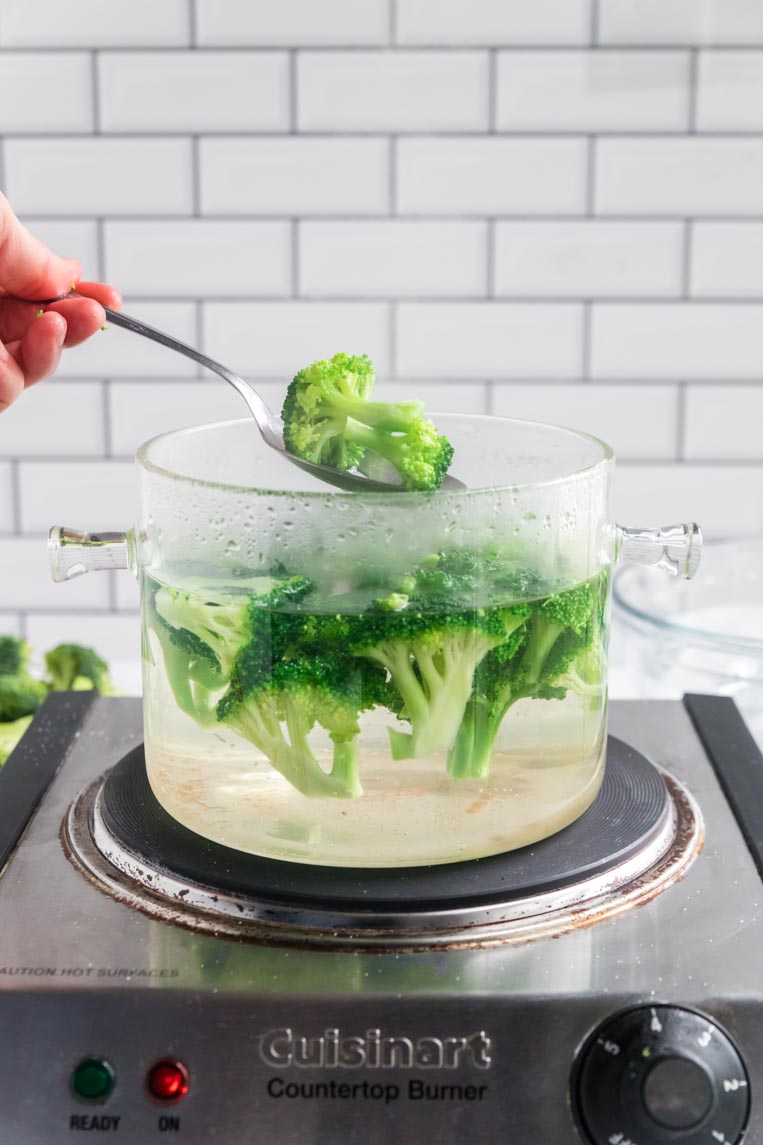
Most often, vegetables are blanched to stop the natural enzymes in them from degrading the quality of the food when frozen. If the enzymes are not broken down, frozen vegetables lose color and become very soft and mushy or even rubbery when thawed.
Blanching is also used in recipes where a vegetable may not have quite enough time to cook thoroughly in the dish and needs a jump on the cooking process. Some types of stir fries are a good example of this.
What is blanching?
Blanching is the simple process of lightly cooking a hardy vegetable for a brief amount of time, then plunging it into an ice bath, a critical step in the blanching process. This important step stops the residual heat from continuing to cook the broccoli and preserves the bright colors, fresh taste, and fresh texture of the vegetable.
Besides broccoli, carrots, snap peas, cauliflower, and asparagus are other vegetables that are can be blanched before preparing or freezing.
How to prep broccoli for blanching
Before you toss the florets into a pot, you will need to clean and cut the florets. To start, soak the whole head of broccoli in cold water for a few minutes to get rid of dirt or debris. After a few minutes, allow the broccoli to drain on a towel.
Using a sharp chef’s knife, trim the florets away from the stalk. Set the stalk aside.
With a paring knife, separate the florets into ½ inch to 1-inch pieces. I recommend cutting the florets into uniform-sized pieces so they will cook evenly and can easily be tossed into a recipe whenever needed. This will save you additional prep time later.
What to do with broccoli stems
Broccoli stems are edible and can be just as delicious as the florets. Most people discard the stems because they have a tough and woody texture, but blanching the stem will soften the fibrous texture and add additional crunch to your dish.
To prepare the stems for blanching, cut off about 1 inch from the bottom of the stem and discard or add to the compost pile. Peel a single layer off of the remainder of the stem with a vegetable (or potato) peeler and chop into ½-inch thick pieces.
You will need to boil the stems slightly longer than the florets; so cook them separately and add a minute to the boiling time.
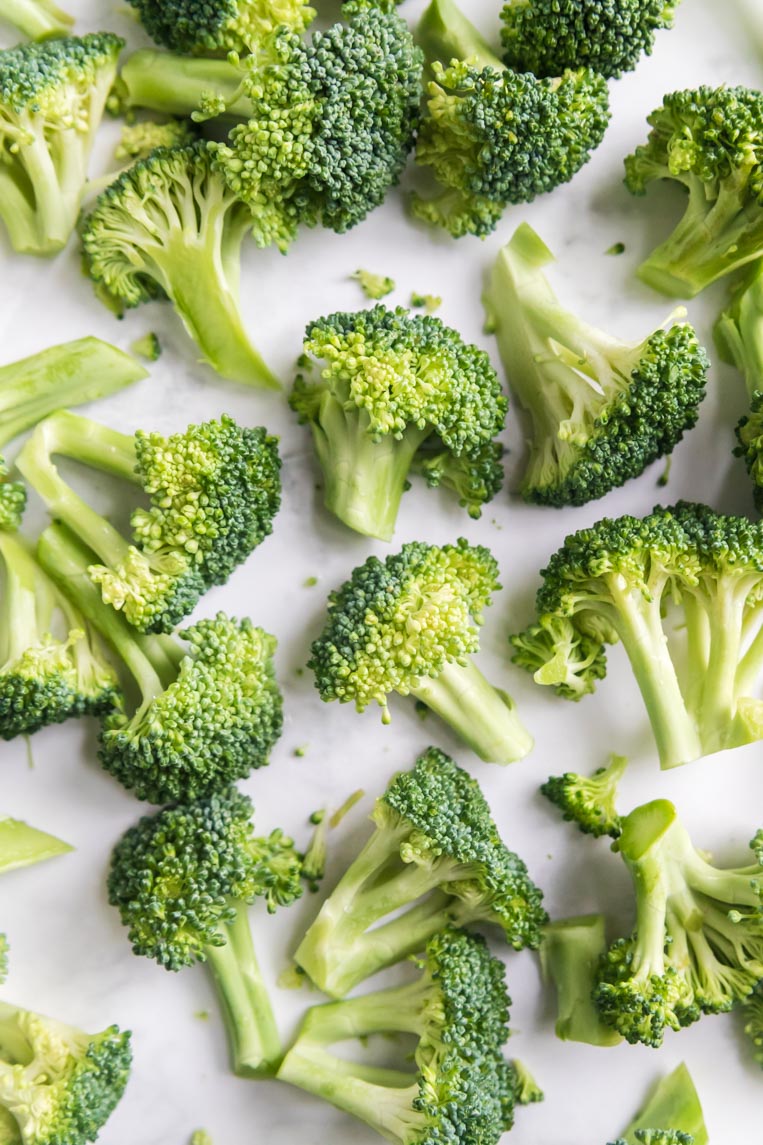
What to do with broccoli leaves
Did you know that broccoli leaves are edible? While you probably won’t find them on a restaurant menu, broccoli leaves can be a delicious and healthy addition to your diet. The leaves are packed with vitamins and minerals, such as fiber, vitamins C and K, iron, and potassium. Plus, they have plenty of flavor potential with their versatility!
Much like kale, spinach, collard greens, mustard greens, and chard, broccoli leaves add roughage to soups, salads, sandwiches, and even smoothies.
But, unless you are growing your own broccoli, the broccoli heads from the grocery store have likely been cleaned of the excess leaves. If you find yourself with an abundance of broccoli leaves, save them for braising, stir-frying, or steaming for added nutrition. Simply, wash, chop, saute until tender, and serve!
How to blanch broccoli
- With your stems and florets prepared, bring a pot of water to a rolling boil. As you are waiting for the water to boil, prepare a large bowl filled with cold water and ice for the ice bath. Setting a colander down in a bowl of ice water works well if you want to lift out the broccoli easily.
- When the water comes to a boil, add a heaping pinch of kosher salt to the boiling water. This adds a subtle but critical layer of flavor.
- Submerge the broccoli pieces into the pot. Allow the pot to boil for about 1 minute, or until the color changes to bright green. Then, immediately remove the broccoli from the pot with a slotted spoon and transfer it to the ice bath.
- Leave the broccoli in the ice bath for about 3 minutes. Then, drain the broccoli in a colander or on a layer of paper towels or a dish towel. The texture should be hard and crisp because it’s not fully cooked. From here, you can continue the recipe, or freeze it for later.
- After the excess water has drained, arrange the broccoli in a single layer on a sheet pan lined with parchment or wax paper. Allow the pieces to cool completely before transferring the sheet pan to the freezer for the initial freeze, which will prevent the pieces from clumping when freezing.
- Once frozen (about 1-2 hours), remove the sheet pan from the freezer and portion the broccoli into zip-top bags. Label the freezer bags with the contents, date, and measurement if desired.
- Broccoli can be frozen for up to one year without sacrificing flavor. While it’s still safe to consume after one year, the quality and taste will decline.
What to serve with broccoli
Since blanched broccoli is still just as fresh as the day it was harvested, you can use it for any dish! I always stick to the protein, carb, green vegetable method. Try these ideas:
- Pasta, egg noodles or couscous tossed in butter and herbs
- Baked salmon filets or salmon patties
- As a side with hamburgers or pork chops
- With any grilled or roasted poultry
If you are using blanched broccoli as a side, add it to a pot with an inch of boiling water, cover and simmer until thawed and hot. Drain, then toss with butter and salt and a bit of cheddar or parmesan cheese. Perfection!
Some recipes to use blanched broccoli
Blanched broccoli is often the base for casseroles. Try this classic southern broccoli casserole:
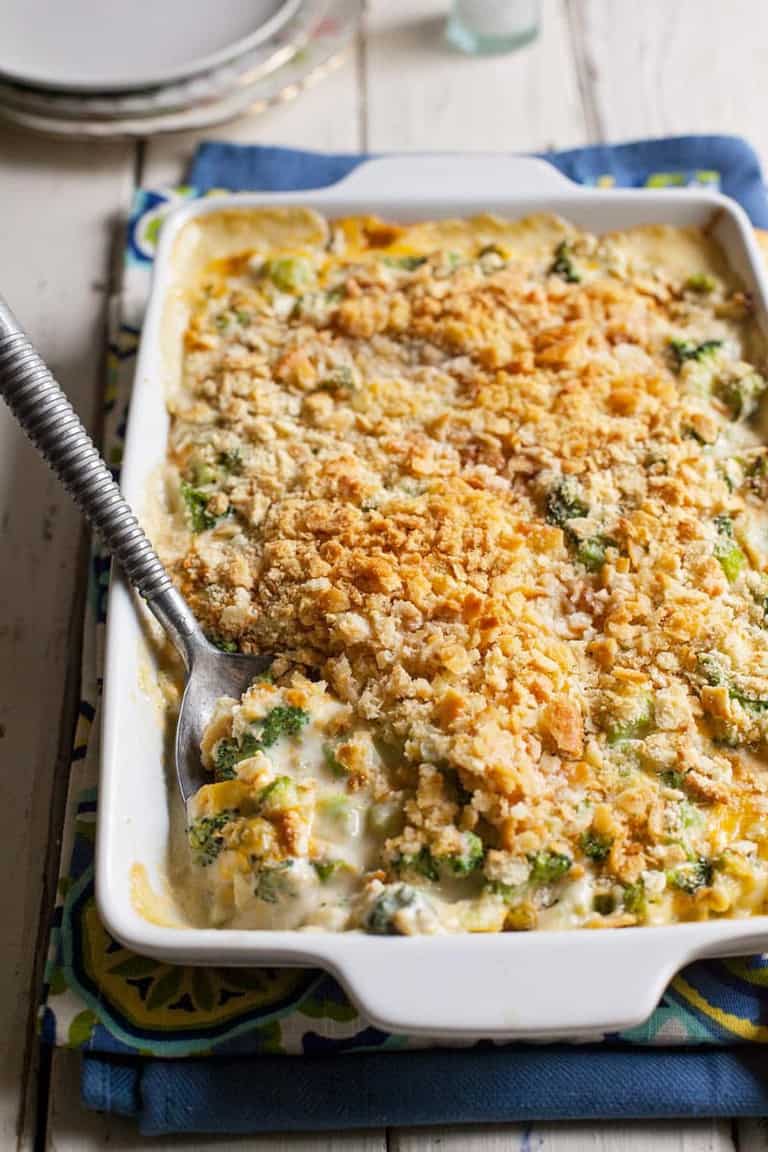
Broccoli cheddar soup is hearty and filling (and way better than Starbucks!). I top mine with cheesy homemade sourdough bread, but you can leave it off or add a slice of toasted french bread.
Broccoli Cheddar Soup with Sourdough Toast


How to blanch broccoli
Ingredients
- 2 quarts water
- 2 tablespoons sea salt
- 2 large broccoli heads about 4 cups
Instructions
- Rinse the broccoli heads under running water and cut off the stems. Cut the broccoli heads into florets about 1 inch in size.
- If you'd like to blanche the stems, cut them in to 1 inch pieces and blanch separately from the florets (they take a bit longer to cook).
- Set broccoli aside and bring the water to a rolling boil over high heat.
- Just before the water boils, make an ice bath: Add water and ice to a medium size bowl and set aside.
- When the water in the pot boils, add the salt.
- Add the broccol in two batches to the salted boiling water. Boil 1 minute until bright green then use a slotted spoon or strainer to move the broccoli to the ice water.
- Repeat the blanching process with the other half of the broccoli. If you'd like to blanch the stems, cook for 2 minutes before moving to the ice bath.
- Drain the cold broccoli on a dish towel or paper towels. Use the broccoli in your favorite recipes or prepare it for the freezer.
- To freeze, lay the florets on a cookie sheet lined with parchment paper and freeze until firm then transfer to an air tight container or zip top bag to prevent the broccoli from clumping. Freeze for up to a year.

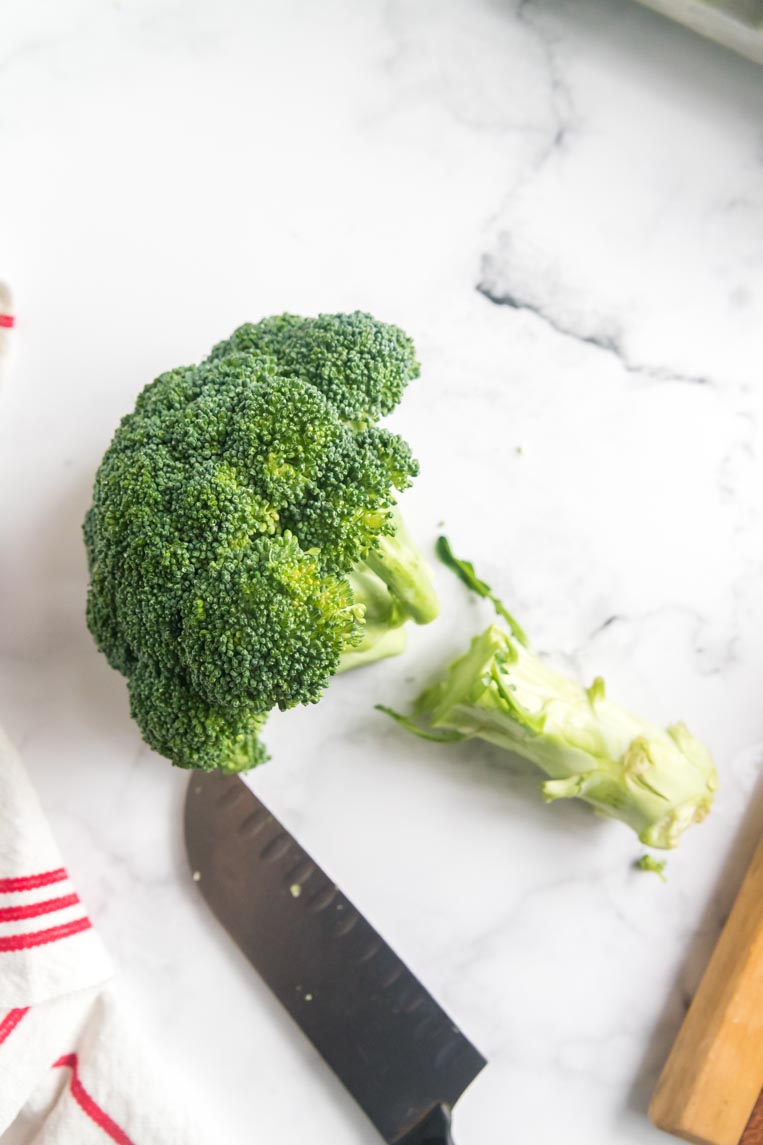
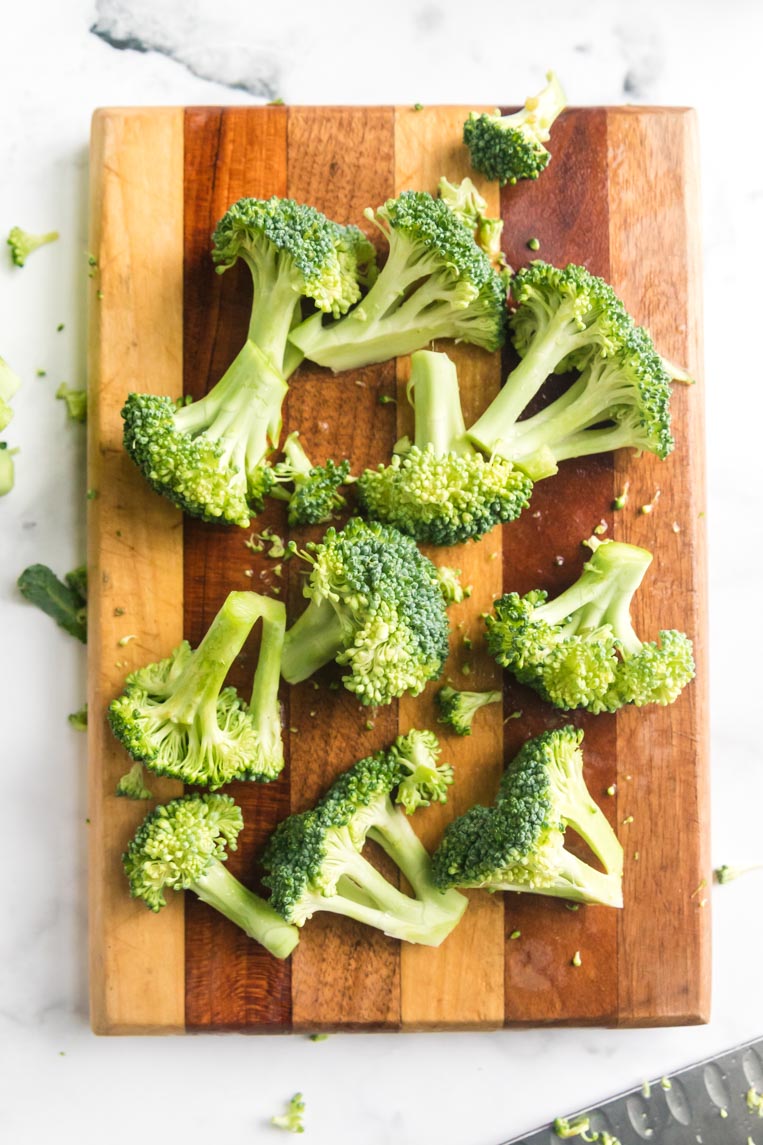
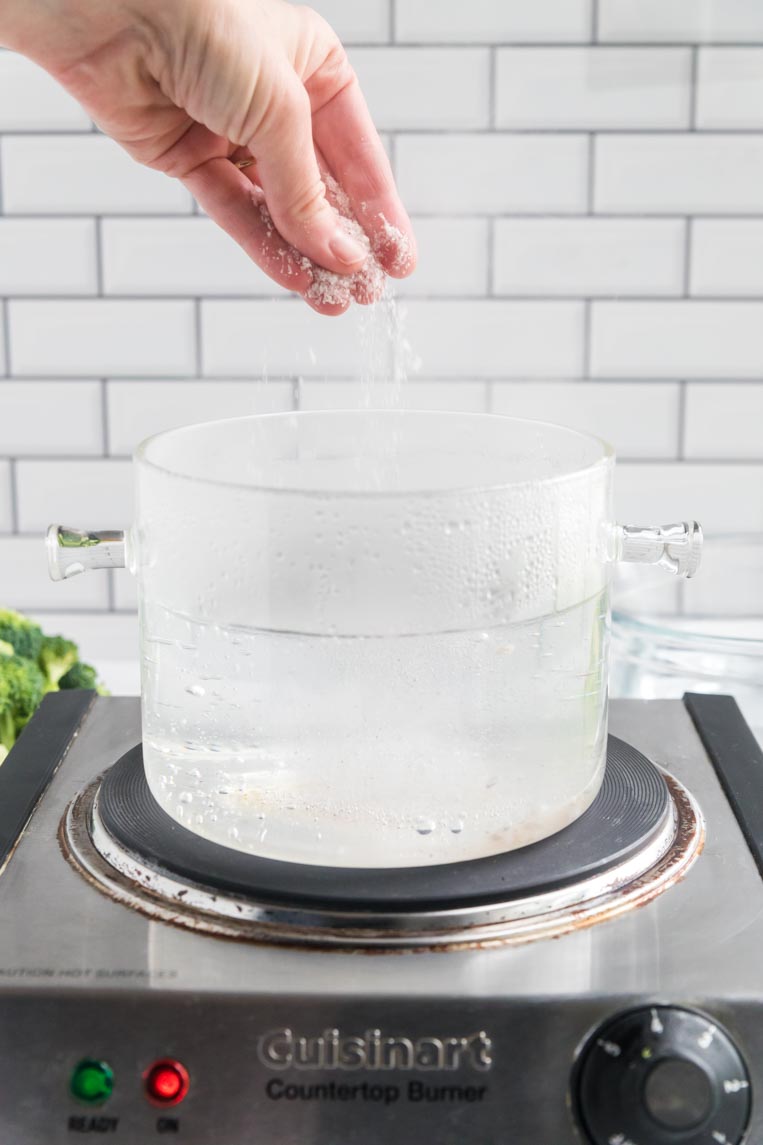
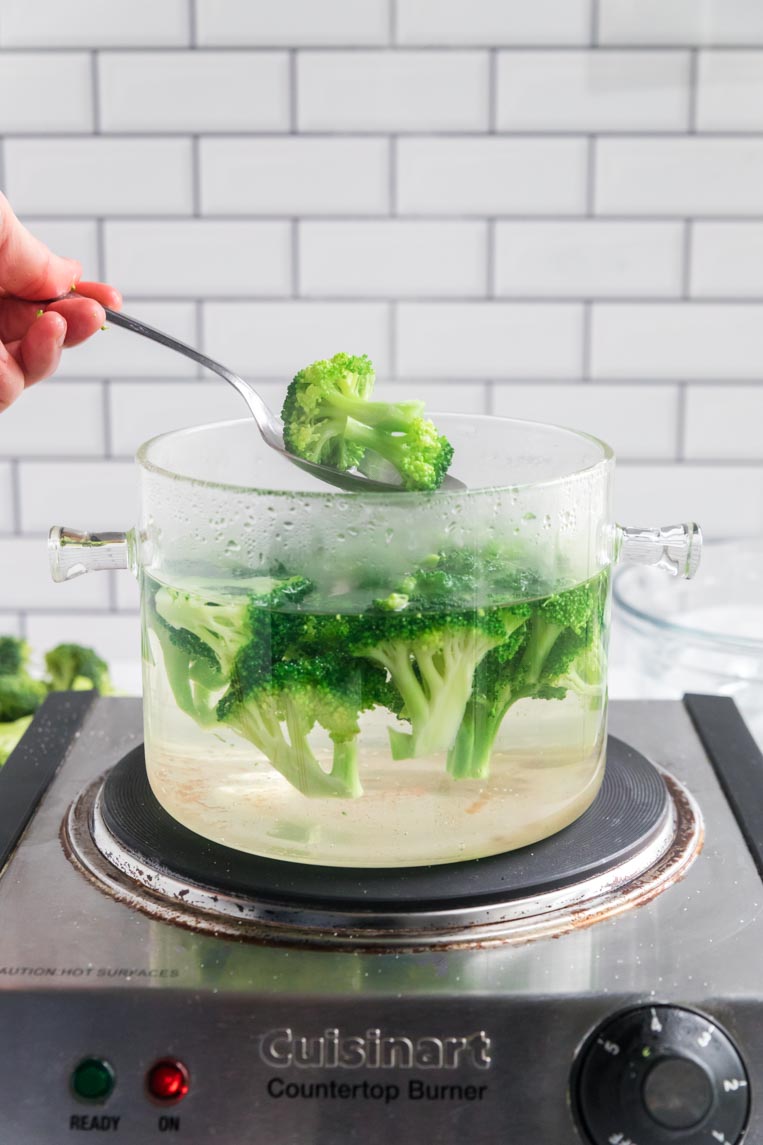
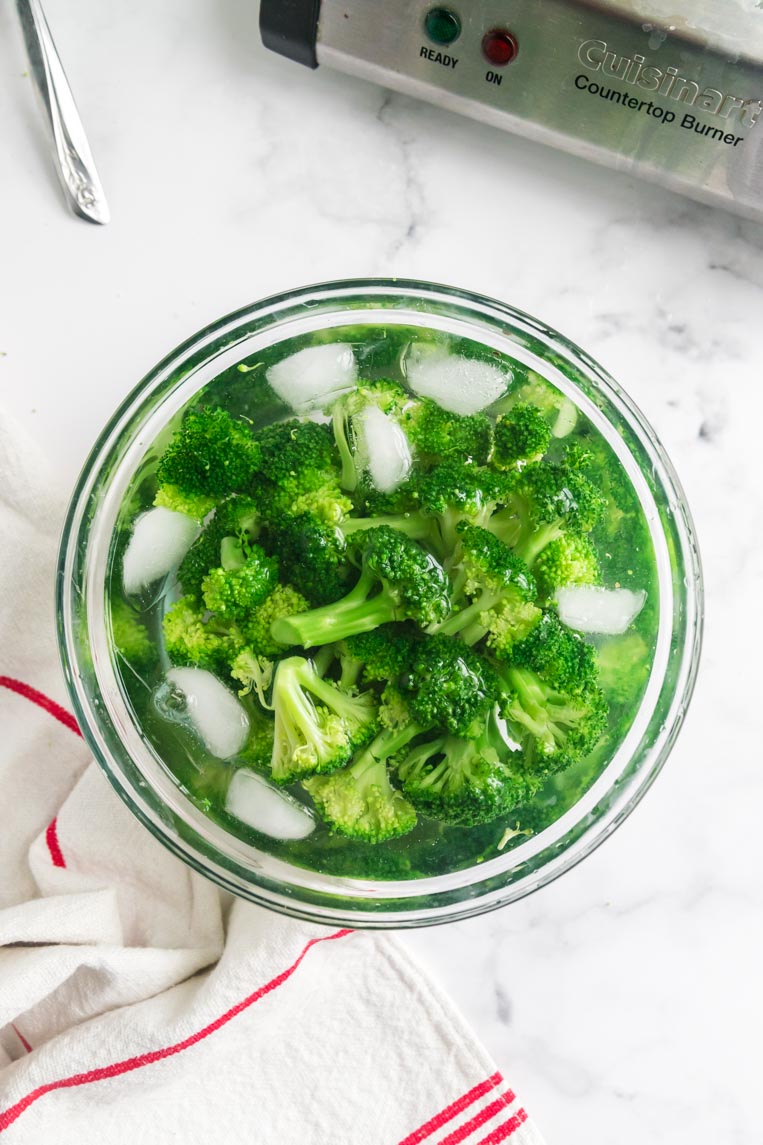
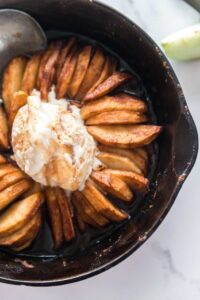




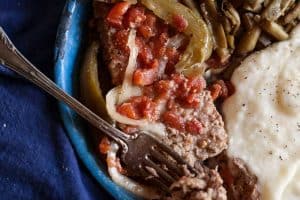
About the Author
Rachel Ballard, RN, BSN brings more than 20 years of professional nursing expertise to Feast and Farm. With a love for nutrient dense foods that support wellness, she works to distill complex health information and current trends into recipes that fuel the best version of yourself. Read more about Rachel here.